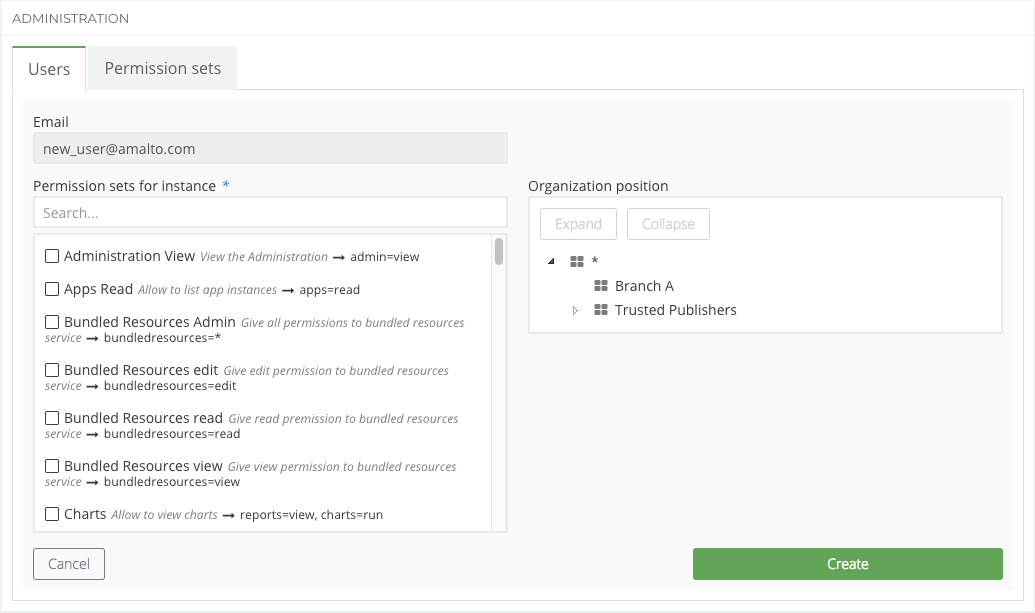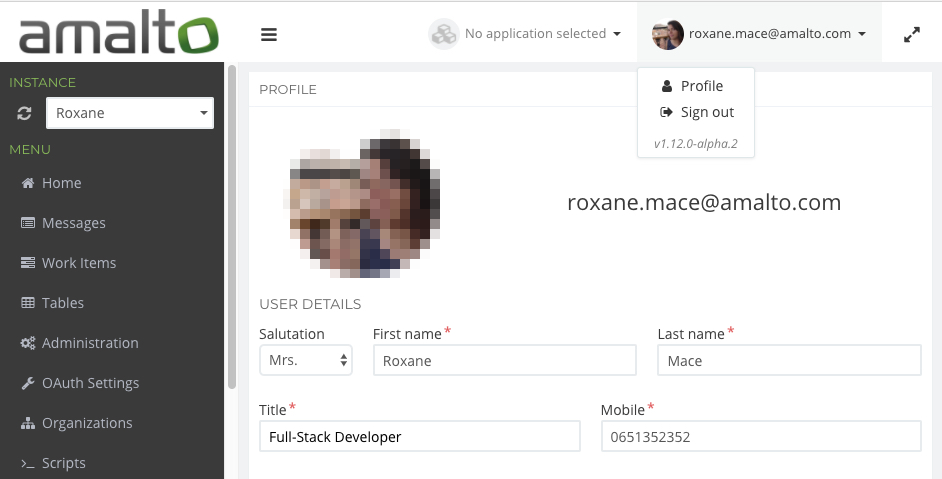Users Guide
This section explains how to manage the users of the instance.
A user is defined by an address email and has access, according to his permissions, to some of his instance’s features.
A user can be assigned to different instances with the same credentials.
Create a new user on an instance¶
Enter the new user’s address email in the input on the left on the button Search.

Click on the button Associate new user.

You need to assign at least one permission to your user. See the page Permissions sets to know which permissions are needed by a feature.
You need also to bind the user to an organization. By default, bind him to the first node of the tree.
If the user has never been assigned to a Platform 6 instance, he will receive an email which will ask him to choose his password. Otherwise, he will just receive a confirmation email.
Edit a user’s profile¶
User’s personal information¶
A user can change his profile by clicking on his avatar in the top right of the Portal.

On this page, he can edit his personal information, select the language of the Portal (English or French) and update his password. However, he can’t edit his email address.
User’s permissions¶
The administrator of the instance can change the user’s permissions in the menu entry Administration in the tab Users.

He can also disassociate him from the instance or delete his account.
Give access to Administration¶
If you don’t want to give the super user permission to a user, but you would like him to be able to update his permissions and his organisations, you can assign the following permissions.
First, you need to give him the permission admin=view, otherwise he can not view the menu entry.
Access to the Users¶
To be able to read the users information, he needs to have the permission users=read('./*').
To edit the users’ permissions (without deleting the accounts), he needs to have in addition the permission users=edit.
To be able to edit and delete the accounts, he needs to have in addition to the permission read-only, the permission users=*.
Access to the Permission sets¶
To be able to read the permission sets information, he needs to have the permission permsets=read('*').
To edit the permissions, he needs to have in addition the permission permsets=edit or he can have only the permission permsets=*.